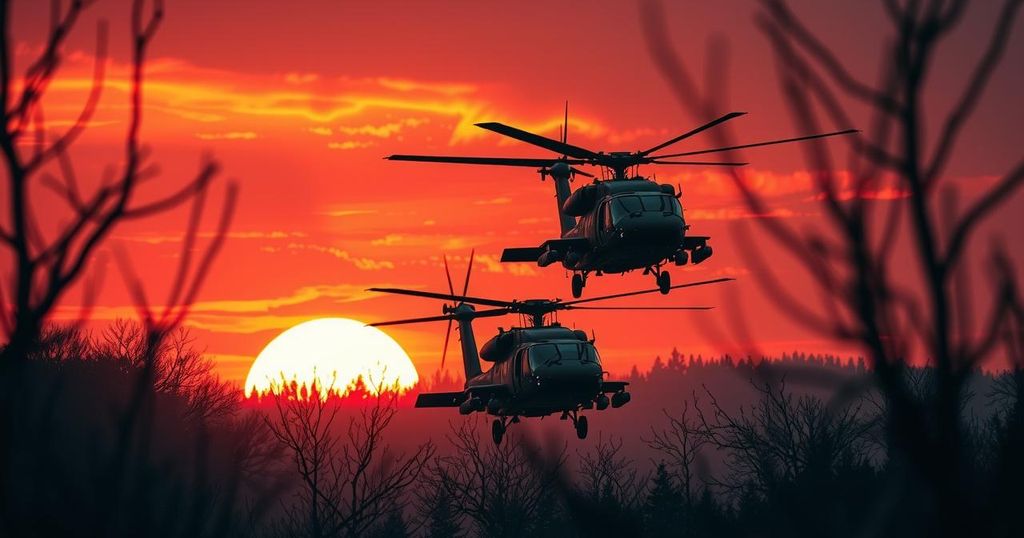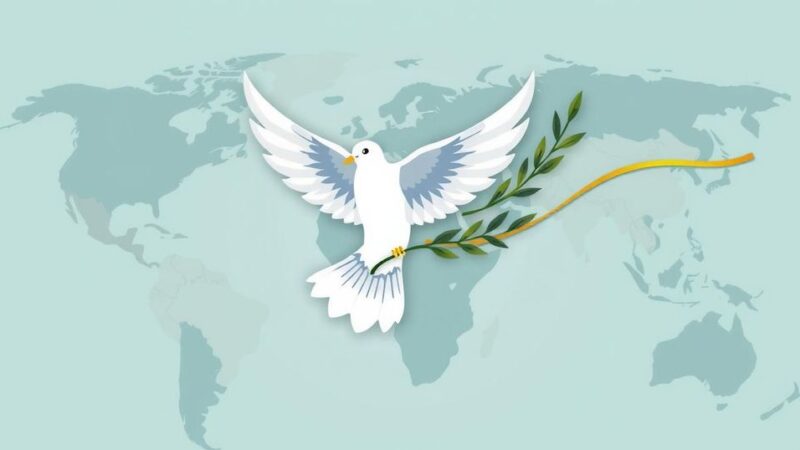The Battle of Mogadishu in 1993 resulted in the loss of 18 U.S. soldiers and two helicopters during a UN-led operation aimed at mitigating famine in Somalia. The event marked the bloodiest day for U.S. forces since Vietnam and prompted a strategic rethink regarding American military engagement in humanitarian missions, with significant implications for foreign policy.
Somalia has long faced severe food insecurity and famine. This situation echoes the events of the 1993 Battle of Mogadishu, wherein the U.S. military, part of a UN-led effort, mistakenly suffered significant losses, losing two Black Hawk helicopters and 18 soldiers while intervening to alleviate famine in the country.
The United Nations initiated the United Nations Operation in Somalia (UNOSOM) in 1992 to combat civil war and hunger. Alongside, ‘Operation Provide Relief’ was launched to deliver essential food aid. However, ongoing fighting among warlords hindered the effective distribution of aid, prompting the UN to escalate efforts to assist the most vulnerable populations.
In December 1992, the United States, under the UN umbrella, began Operation Restore Hope, authorized by President George H.W. Bush. This operation established the United Task Force (UNITAF), which was a multinational military contingent sanctioned to utilize force to ensure peace. By March 1993, UNITAF transitioned into UNOSOM II, which faced greater challenges, including opposition from the Somali National Alliance (SNA), led by Mohammad Farah Aidid.
The newly mandated UNOSOM II aimed to restore democracy and required protection for aid deliveries. Unfortunately, skirmishes with the SNA escalated, culminating in an ambush of Pakistani troops in June 1993, igniting intense conflict and further casualties. Accusations against the SNA for the attack marked a watershed moment, shifting the UN’s focus to targeting General Aidid directly, resulting in prolonged hostilities.
In August 1993, the U.S. Task Force Ranger initiated ‘Gothic Serpent’, designed to capture Aidid. On October 3rd, they received intelligence of a meeting between Aidid and his allies in Mogadishu. Planning for an operation ensued that culminated in the infamous Battle of Mogadishu, which unfolded over a grueling 17 hours with U.S. forces attempting to secure the target and extract captured personnel.
During this operation, two Black Hawk helicopters were shot down by SNA fighters equipped with Rocket Propelled Grenades. This led to desperate rescue attempts, resulting in intense firefights. The first crash site saw no survivors, but significant combat occurred at the second site, notably with the capture of pilot Michael Durant.
The operation proved disastrous, resulting in the deaths of 18 U.S. soldiers and hundreds of Somali casualties. Public sentiment concerning the military engagement swiftly turned unfavorable, prompting President Bill Clinton to announce a withdrawal of U.S. forces by March 1994. The event marked a pivotal moment in U.S. military engagement overseas, viewed as the bloodiest since the Vietnam War.
The aftermath led to a reevaluation of American foreign policy towards humanitarian interventions. The U.S. State Department would later reflect on the necessity and risks of foreign peacekeeping operations in light of Somalia’s turmoil, encapsulated in their assertion of struggling to maintain a balance between public safety and humanitarian intervention initiatives.
Despite the controversies surrounding U.S. involvement, military analysts claim the Battle of Mogadishu showcased tactical resilience, framing the smaller U.S. force’s capacity to contend against a significantly larger enemy as a tactical success.
The saga of the Battle of Mogadishu was later chronicled by Mark Bowden in his book, “Black Hawk Down: A Story of Modern War,” further adapted into a film released in 2001. Despite their age, the issues that initially plagued Somalia remain unresolved, with current humanitarian reports reflecting continued threats of famine affecting millions, especially children. The World Food Program indicates that 1.7 million children are at risk of acute malnutrition, underscoring the chronic instability in the region and the looming crisis ahead.
The Battle of Mogadishu serves as a critical example of the complexities of U.S. military involvement in foreign humanitarian crises, revealing the stark realities of warfare and peacekeeping. The fallout initiated a significant reassessment of American foreign policy towards intervention and global peacekeeping operations, amidst ongoing humanitarian crises in Somalia. Today, Somalia still grapples with insecurity and famine, echoing past challenges that remain unresolved.
Original Source: www.eurasiantimes.com






